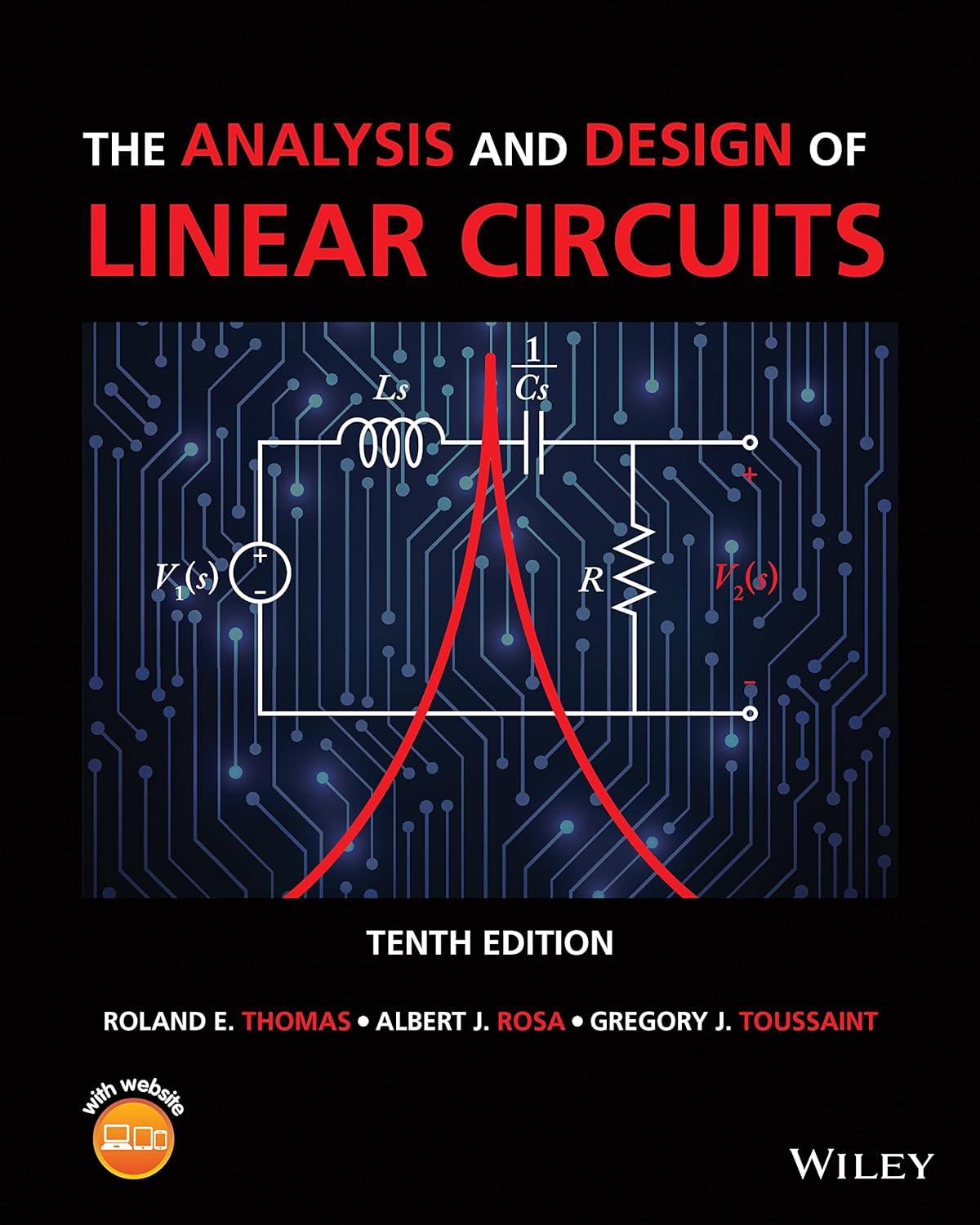Use the phasors below and the additive property to find the sinusoidal waveforms (v_{3}(t)=v_{1}(t)-v_{2}(t)) and (i_{3}(t)=2 i)
Question:
Use the phasors below and the additive property to find the sinusoidal waveforms \(v_{3}(t)=v_{1}(t)-v_{2}(t)\) and \(i_{3}(t)=2 i\) \({ }_{1}(t)+3 i_{2}(t)\).
\[
\begin{aligned}
& \mathbf{V}_{1}=15 \angle 15^{\circ} \mathrm{V}, \omega=2 \pi \times 440 \mathrm{rad} / \mathrm{s} \\
& \mathbf{V}_{2}=15 \angle 195^{\circ} \mathrm{V}, \omega=2 \pi \times 440 \mathrm{rad} / \mathrm{s} \\
& \mathbf{I}_{\mathbf{1}}=200 \angle-45^{\circ} \mathrm{mA}, \omega=10^{4} \mathrm{rad} / \mathrm{s} \\
& \mathbf{I}_{\mathbf{2}}=-100 \angle 135^{\circ} \mathrm{mA}, \omega=10^{4} \mathrm{rad} / \mathrm{s}
\end{aligned}
\]
Fantastic news! We've Found the answer you've been seeking!
Step by Step Answer:
Related Book For 

The Analysis And Design Of Linear Circuits
ISBN: 9781119913023
10th Edition
Authors: Roland E. Thomas, Albert J. Rosa, Gregory J. Toussaint
Question Posted:





